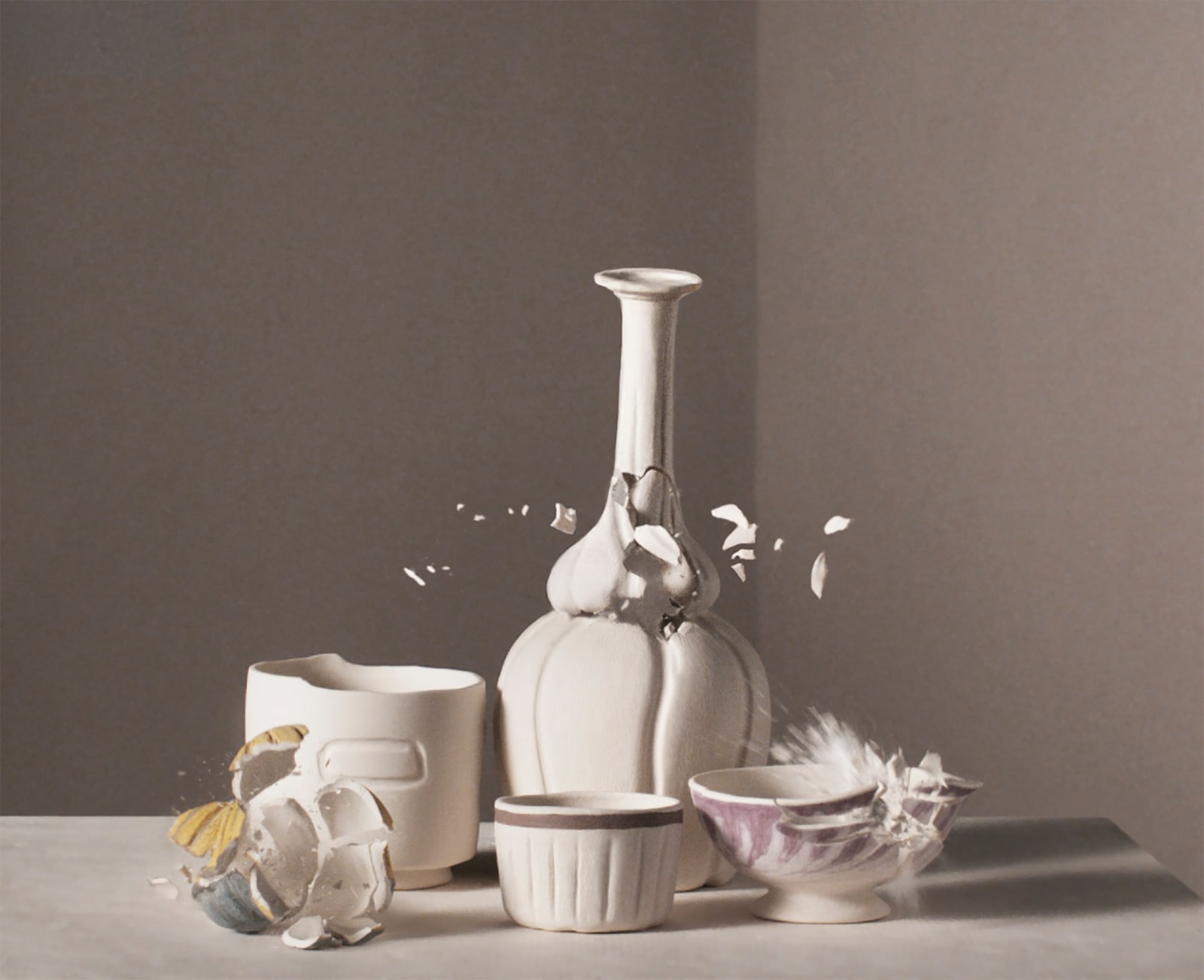-

Ori Gersht
Evertime 16, 2021Archival pigment print, dry-mounted to aluminium and face-mounted with Diasec. Framed in the artist's bespoke white frame.Paper size: 34.6 x 42.8 cm
Frame size: 36.8 x 44.9 cmEdition 2/6 + 2 APsSigned versoProvenance
Directly from the artistLiterature
Ori Gersht was born in Tel-Aviv, Israel in 1967 and has lived in London for over twenty years.
Throughout Gersht’s career, his work has been concerned with the relationships between history, memory and landscape. He often adopts a poetic, metaphorical approach to explore the difficulties of visually representing conflict and violent events or histories.
Gersht approaches this challenge not simply through his choice of imagery, but by using modern technology and artificial intelligence to push the technical limitations of photography, questioning its claim to truth. Frequently referencing art history, Gersht’s imagery is uncannily beautiful; the viewer is visually seduced before being confronted with darker and more complex themes, presenting a compulsive tension between beauty and violence. This has included an exploration of his own family’s experiences during the Holocaust, a series of post-conflict landscapes in Bosnia and a celebrated trilogy of slow-motion films in which traditional still lives explode on screen.
Gersht is perhaps best known for his work with slow-motion capture, wherein he produces images and video portraying fruits, flowers, and other material fracturing when stuck with high velocity gunfire.
In his most recent series, New Orders - Evertime , dedicated to the Italian modern master, Giorgio Morandi, Gersht reconstructs the still life theatre typical of the Italian artist and then optically immortalises it in the moment of its explosion.
For this project, Gersht commissioned masterfully crafted replicas of the vessels and bottles found in Morandi’s paintings. After carefully arranging and lighting them in a resolved composition, he fired on the ceramics with an air rifle, while simultaneously recording the destruction and fragmentation of the objects with a highresolution camera. Sequences of images and panoramas relay a cinematic unfolding of destruction and collapse that would otherwise not be visible in our normal experience of events.
Just as Giorgio Morandi did, Ori Gersht tries to go beyond the boundaries of mere exteriority, waging a battle against the ephemeral, the inconsistency and the superfluous, with an almost sacred ritual and care, to submit himself to the awareness that things fall apart.
The corpus of artworks by Ori Gersht is, as described by the Italian curator curator Ermanno Tedeschi, “imbued by that sensation of movement stopped inside the time frame. A painstaking arrangement of the elements being suddenly hit by an explosion. In this apparent violence, the artist immortalizes a serenity that goes beyond nature. He succeeds in bringing still life to life, capturing it in the infinitesimal moment in which it explodes and then rests on the ground, destroyed”.
As the artist himself declares, “a new type of visual space is generated in this way: a purely photographic space where past and future meet. This is the photographic ‘now’”.Publications
History Reflecting, 2015, MFA Boston
